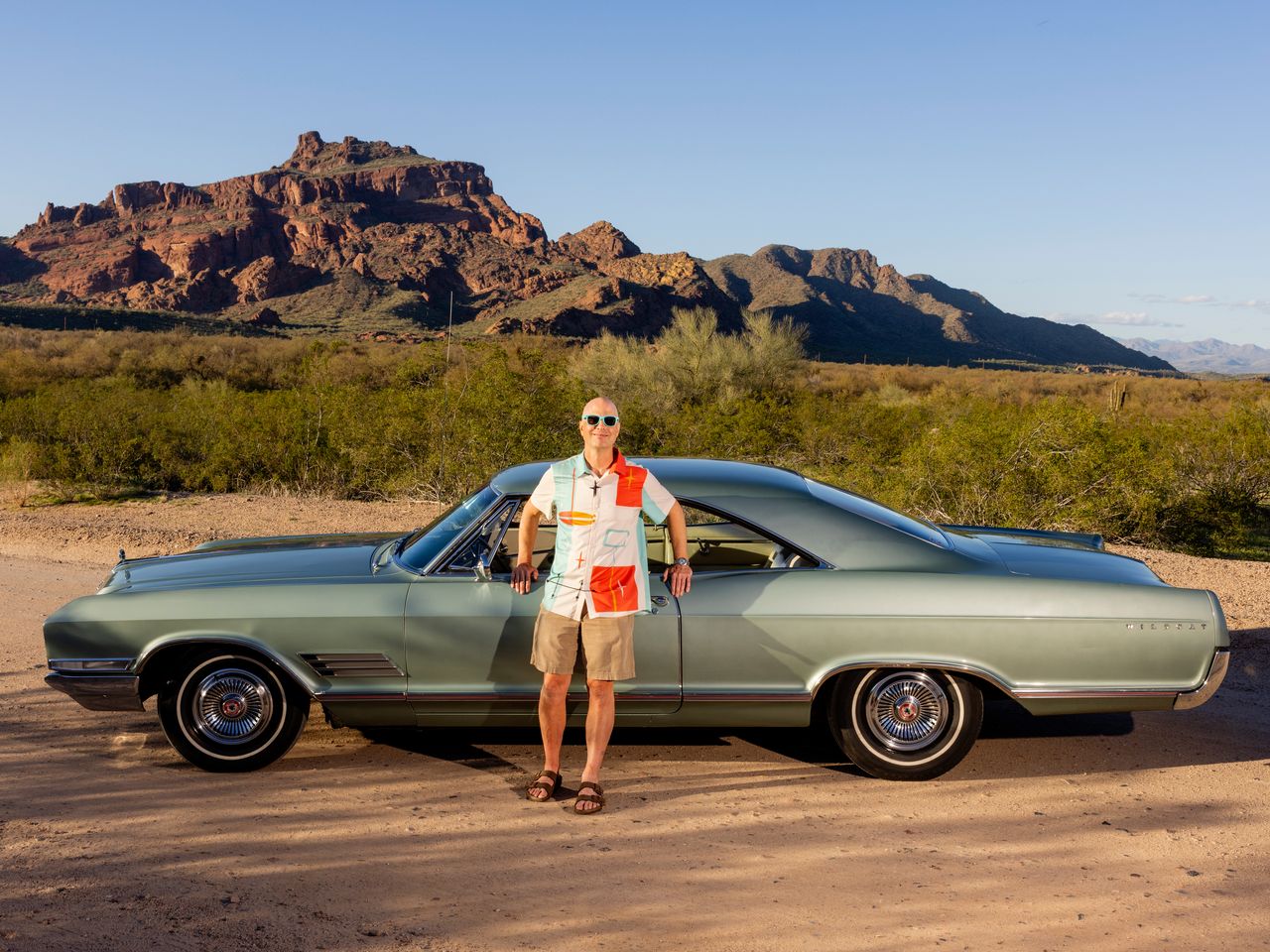
THIS 1966 WILDCAT IS SO PRISTINE, IT STILL HAS ORIGINAL AIR IN ITS TIRES
Anson Renshaw, a real-estate valuation officer living in Mesa, Ariz., on his 1966 Buick Wildcat, as told to A.J. Baime.
When I was about 5 years old, I remember my grandma picking me up from the dentist in a big green car. I couldn’t see out the windows. We lived in Anchorage, Alaska. Her name was Sarah Renshaw, and she was born in Petersburg, known as Alaska’s “Little Norway,” into a fishing family. She wore cat-eye glasses, smoked cigarettes and enjoyed a brandy.
She made her own money working at Sears and Roebuck, and she and my grandfather, LeVake Renshaw, owned a gold mine north of Anchorage that is still operational. As my grandfather told the story, when they walked in together to a dealership in Anchorage, she saw this seafoam green car on a spinning display and said, “That one.”
She was 54, the same age as I am now. I have the bill of sale. She got an $800 discount and paid $4,197.66. It was an expensive car at the time. Buick was like the Lexus of today—if you wanted a step up, but didn’t want to buy the fanciest Mercedes. At Thanksgiving and Christmas holidays, my male counterparts (cousins, brothers-in-law) would converge in the garage and salivate over Grandma’s hot rod.
She drove it to the grocery store and back for 28 years, and my grandfather did the oil changes. In 1994, she started to get dementia and, one day, she asked, “Anson, do you want my car?” At the time, I was going to Kansas State, and the Kansas State Wildcat emblem looked just like the Wildcat on the Buick.
What more could a K-State Wildcat want? When my grandma gave me the keys, the car only had 6,993 miles.
I was able to keep it in various places until I could graduate and afford an apartment with a garage in Anchorage. Which meant my daily driver had to sit outside in Alaska while the Wildcat had a warm place to hibernate during the long winters. I drove it about 100 miles a year. I kept it in a garage at 55-57 degrees, with plywood under the wheels so the tires didn’t touch the cold concrete. The 425 cubic-inch V-8 puts out 340 horsepower, and the speed can creep up on you. But I was always judicious about how I drove it and where I drove it. When I started having kids, I photographed them each year on their birthdays in the car.
Two years ago, we moved to Arizona, and I had the car shipped down on an enclosed trailer. Here, it’s the opposite of Alaska; I worried about how the car would handle the heat. In Alaska, I drove it in summer, and here, in winter. When the K-State Wildcats win a football game, I take it out for a victory lap.
This past winter, I could see that the odometer was nearing 10,000 miles. I had this idea to celebrate. I had signs made up, and I got apple cider champagne for my sons Milton, now 17, and Lloyd, 14. The car was going to hit this milestone with all original parts except for the muffler, spark plugs, battery and cables, air filter, and the glove compartment lock.
I knew that the tires were old, but I thought maybe my grandpa had replaced them in the ’70s or ’80s. I found a tire decoder online and, lo and behold, according to my research, the Goodyear tires are original. The only reason they survived, I surmise, is because they had spent much of their lives in a cozy garage in a sub-Arctic environment. On the day the Wildcat turned its 10,000th mile, it did it on tires with some 1966 Alaskan air in them.
My sons are itching to drive this car. I baby it so much, my wife, Chloé, jokes that the car cover I keep on it is a big diaper. The Buick has survived volcanic eruptions and a 7.0 earthquake. I am planning to put replica 1960s tires on it soon. When my little [great] nieces and nephews come over, it’s an honor to take them for a ride and say, “This is your great-great-grandma’s car, and this is just how it looked in 1966.” The little ones are like me when I first rode in this car—they can’t see out the windows.
Write to A.J. Baime at [email protected].
2024-03-10T12:05:41Z dg43tfdfdgfd